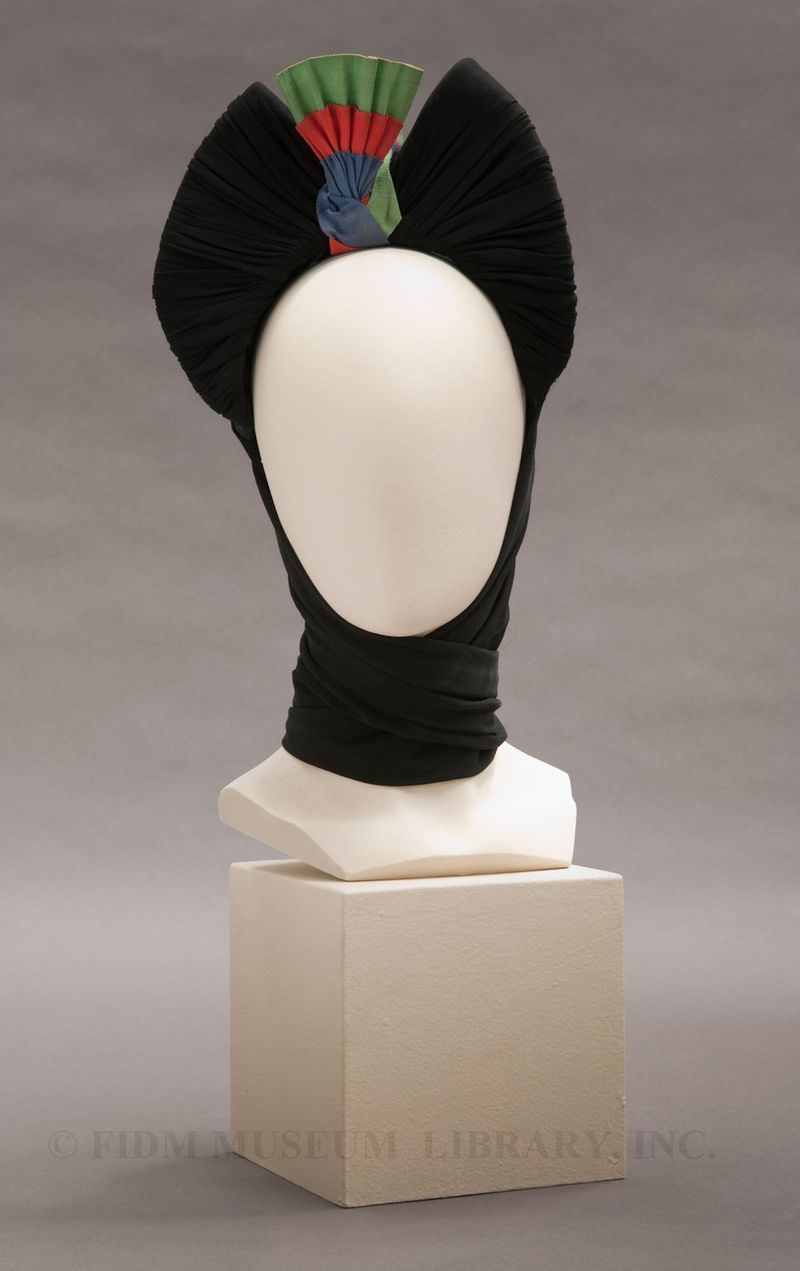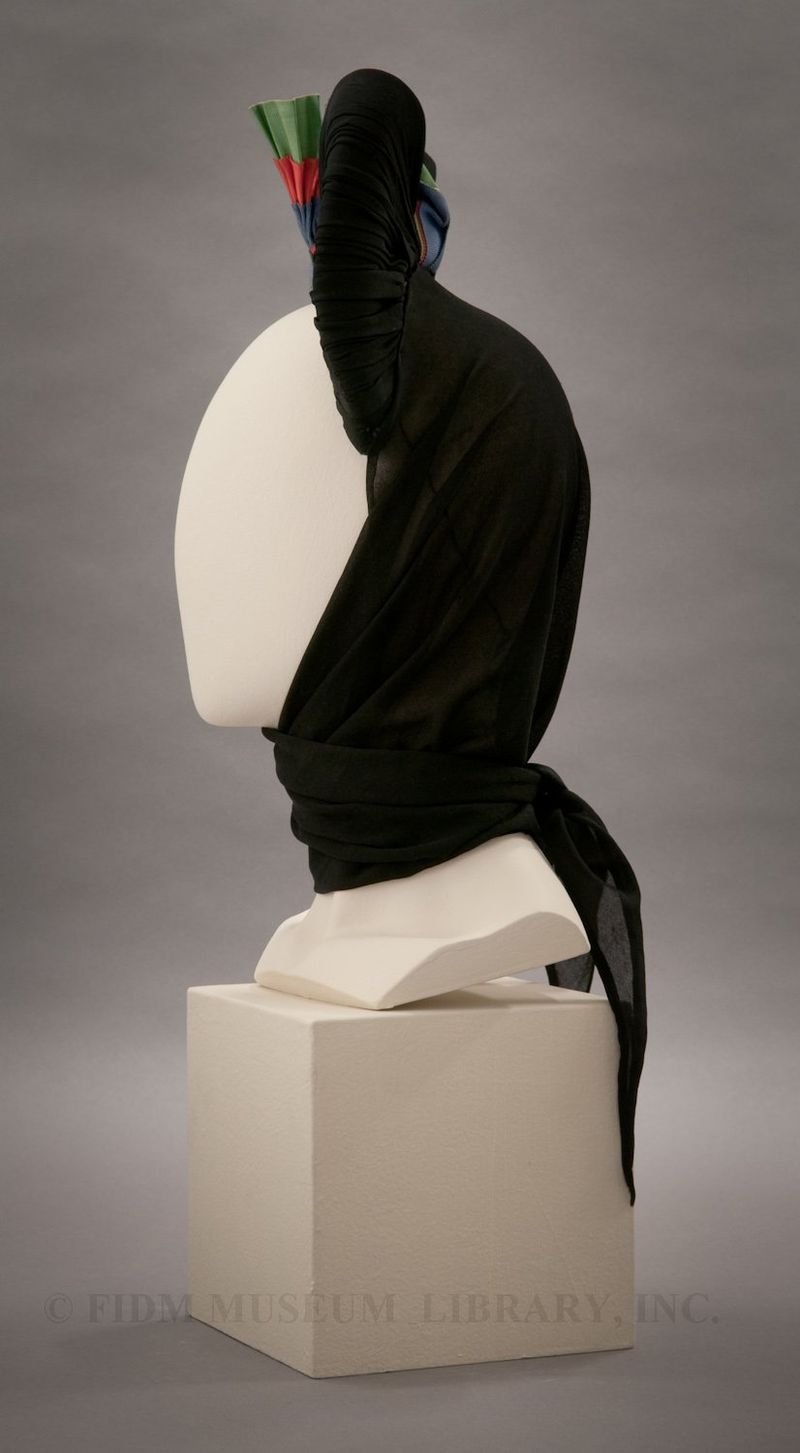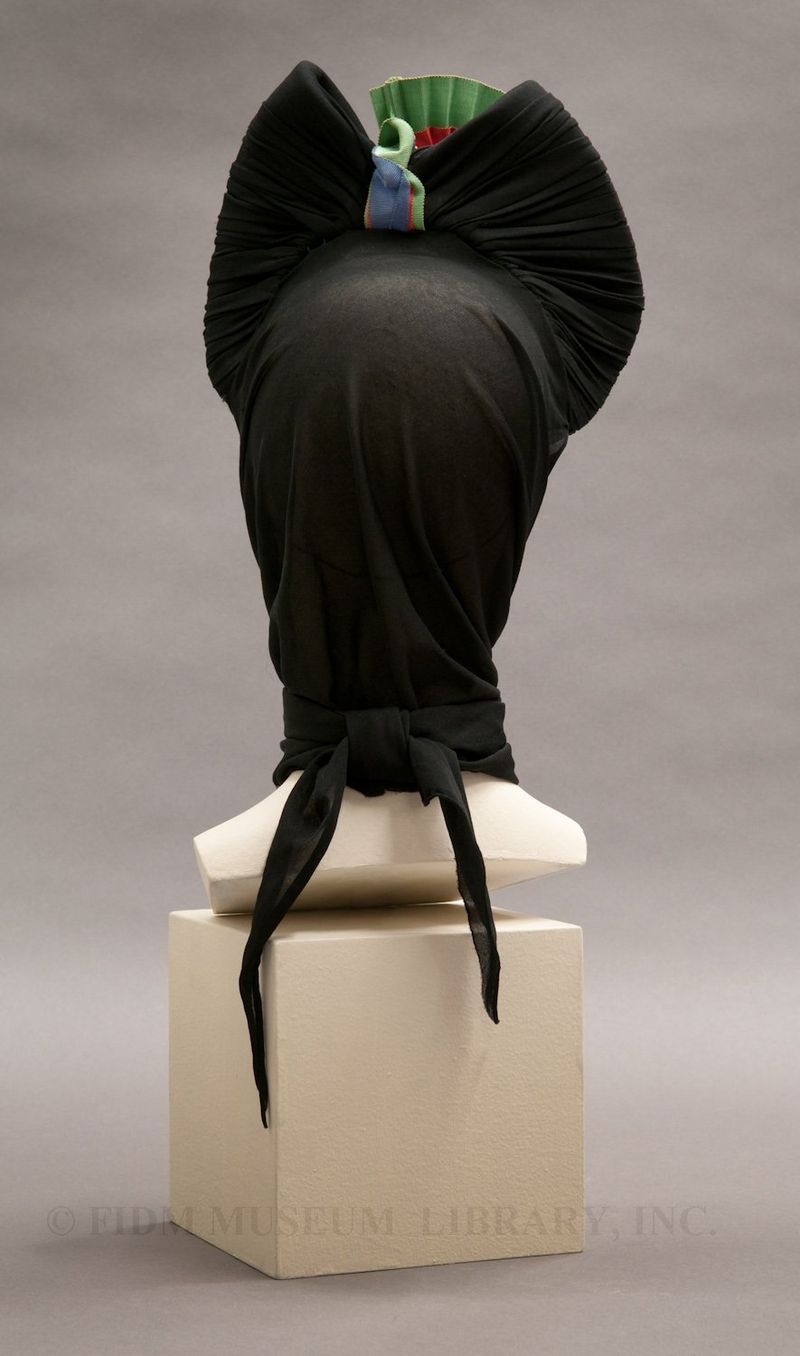Before World War II, fashion reportage devoted equal consideration to millinery and clothing. The newest toques and turbans from Paris milliners were described alongside the latest day and evening wear from Gabrielle Chanel, Jean Patou and Jeanne Lanvin. As was true for changes in hemline or silhouette, most millinery trends were born in Paris and then relayed to London, New York and other cities. Preeminent among Parisian milliners during the 1920s and 1930s was Agnés, often referred to as Madame Agnés .
Agnés trained under Caroline Reboux, perhaps the most well-known of the late 19th and early 20th century Parisian milliners. In 1917, Agnés opened her own salon. For her personal wardrobe, she reportedly favored Madeline Vionnet and Louiseboulanger. She was reportedly aware of artistic currents, mining both contemporary and historic art for her designs. In 1925, she designed a close-fitting cloche wrapped with gold and silver leaves, which was described in an advertisement as the "headgear of a goddess." In the 1930s, Madame Agnés began designing softer, draped hats somewhat similar to a turban. In 1936, she created a "Hindu beret turban" for Marlene Dietrich; this hat was a softly puffed beret, tilted to the side. Our Madame Agnés is somewhere between a turban and a hood.
 Agnés
Agnés
1940-43
Museum Purchase
2009.5.23
During the 1930s, turbans were one of many popular types of headwear for women. During World War II, the turban became increasingly prominent. An appealing combination of practicality and style, the turban protected the hair of women who worked during wartime, while also providing a pop of color to a otherwise understated wartime outfit. Turbans or headwraps had the added advantage of flexibility–they could literally be made out of scraps of leftover or reused fabric. Throughout North America and Britain, restrictions, shortages and a strong urge to "make do and mend," meant that wartime headwear was relatively modest. In France, however, World War II inspired increasingly large and frivolous hats, including all manner of turbans.
Though France experienced wartime shortages, the fashion industry continued production. Unlike in North America and Britain, where a sense of wartime duty dictated subdued dress, French women under the occupation continued to dress with flair. Because of the occupation, fashion news didn't travel a direct path from Paris to New York. Instead, news filtered through other countries, particularly Switzerland. According to wartime reports, a knee-length, full skirt, a defined waistline, and a voluminous hat completed the wartime look for Parisian women. This style of dressing was documented by the French magazine L'Officiel , which continued production throughout the war. Browse this 1943 issue of L'Officiel for images of French fashion, including brightly colored skirts and dresses, full sleeves and large hats.
As fashion reports trickled out of Paris, the French insistence on maintaining a sense of style during war drew some criticism. In the August 16, 1943 issue, Life magazine reported on the wardrobe of Madame Dieudonné Costas, wife of a French aviator newly arrived in New York via Spain and Argentina. Life criticized the fullness of her French clothes, suggesting that the draped skirts and dresses were unflattering and suitable only for the matronly figure of a "hefty German frau."1 This despite the fact that the designs were by well-known French couturiers Maggy Rouff and Alix. Others viewed the flamboyance of French wartime dress more favorably, suggesting that it was actually a mode of resistance to the German occupation. Elsa Schiaparelli, who spent the war years in New York City, was a primary defender of French wartime fashion.
Though Nazi occupiers wanted to maintain the prominence of the French fashion industry, they made various attempts to regulate dress through fabric restrictions and forbidding extravagant styles. Hats were apparently a particular point of contention. Though not strictly regulated, milliners were required to show their creations to a review board. Apparently, relatively modest hats were shown to the review board, and then reconfigured for sale to consumers. In 1943, the occupiers singled out "fantastically voluminous" hats for censure.2 This decree was not due to shortages, as hats were already being made from scraps of fabric and salvaged materials like old newspapers, wood shavings and feathers from barnyard animals.3 Rather, it was a tacit acknowledgement that women's hats "were recognized by the Germans as a psychological weapon."4
According to coverage in L'Officiel, Madame Agnés actively designed hats throughout World War II. In 1941, she described her ingenuity in creating hats under wartime shortages: "If we are short of felt, silk or exotic straw for our models…I make do with bits of string."5 Our Agnés hood/turban is made of shaped cardboard covered with black chiffon. It probably dates from the early years of World War II, when shortages were not so acute. Because of its extant label, which reads "Agnés, 83 Faubourg St Honore 83, Angle Avenue Matignon, PARIS" and "Made in France", we know that it is an Agnés orignal, not a licensed copy produced in the United States.
1 "New Styles from Paris & New York" Life 16 Aug. 1943: 42.
2 Lazareff, Helen Gordon. "The Paris Mode–A Mode of Defiance" New York Times 7 May 1944: SM11.
3 Ginsburg, Madeline. The Hat: Trends and Traditions. New York: Barron's.1990: 123.
4 Lazareff, Helen Gordon. "The Paris Mode–A Mode of Defiance" New York Times 7 May 1944: SM11.
5 Quoted in Veillon, Dominique. Fashion Under the Occupation. New York: Berg: 2002: 65.



